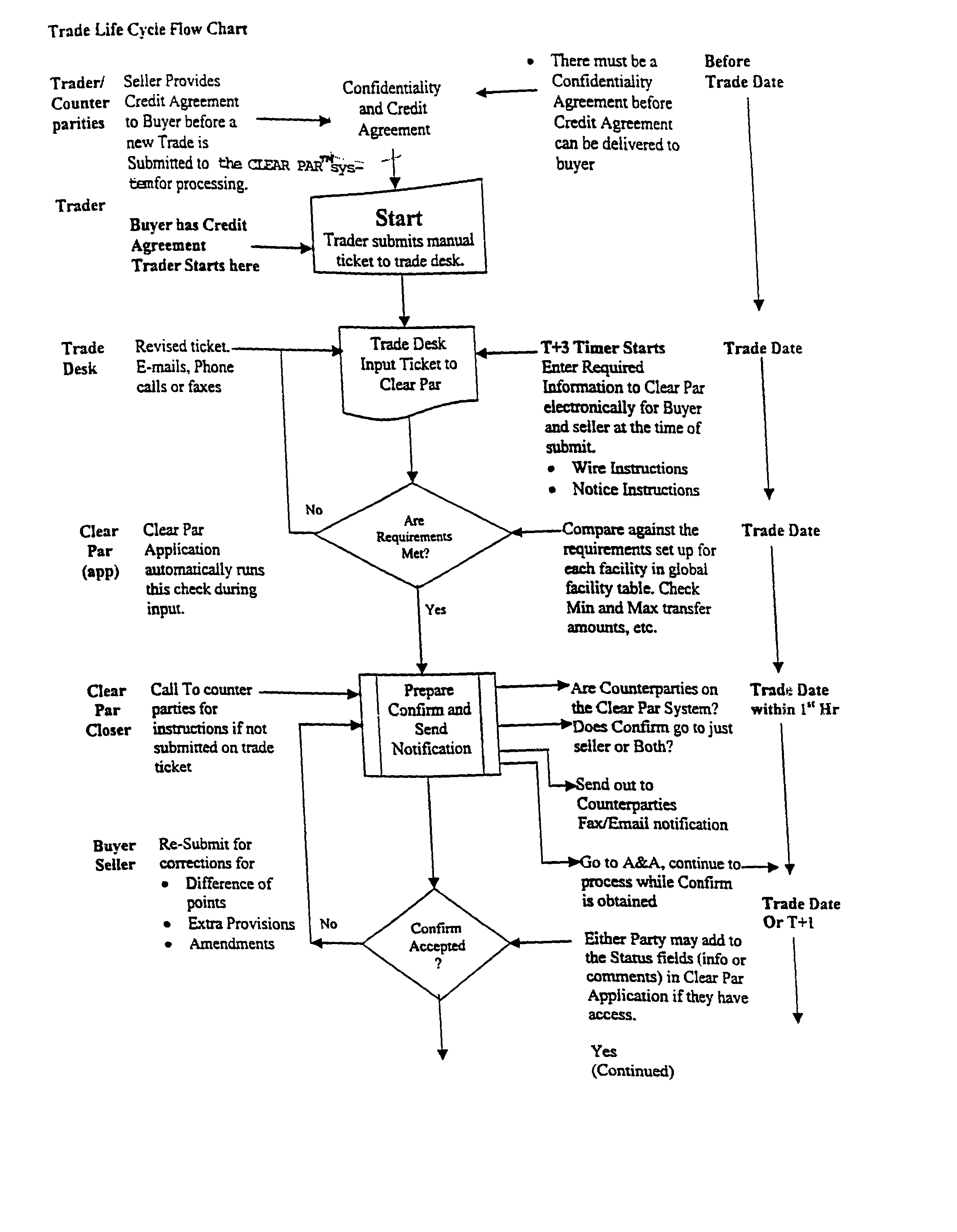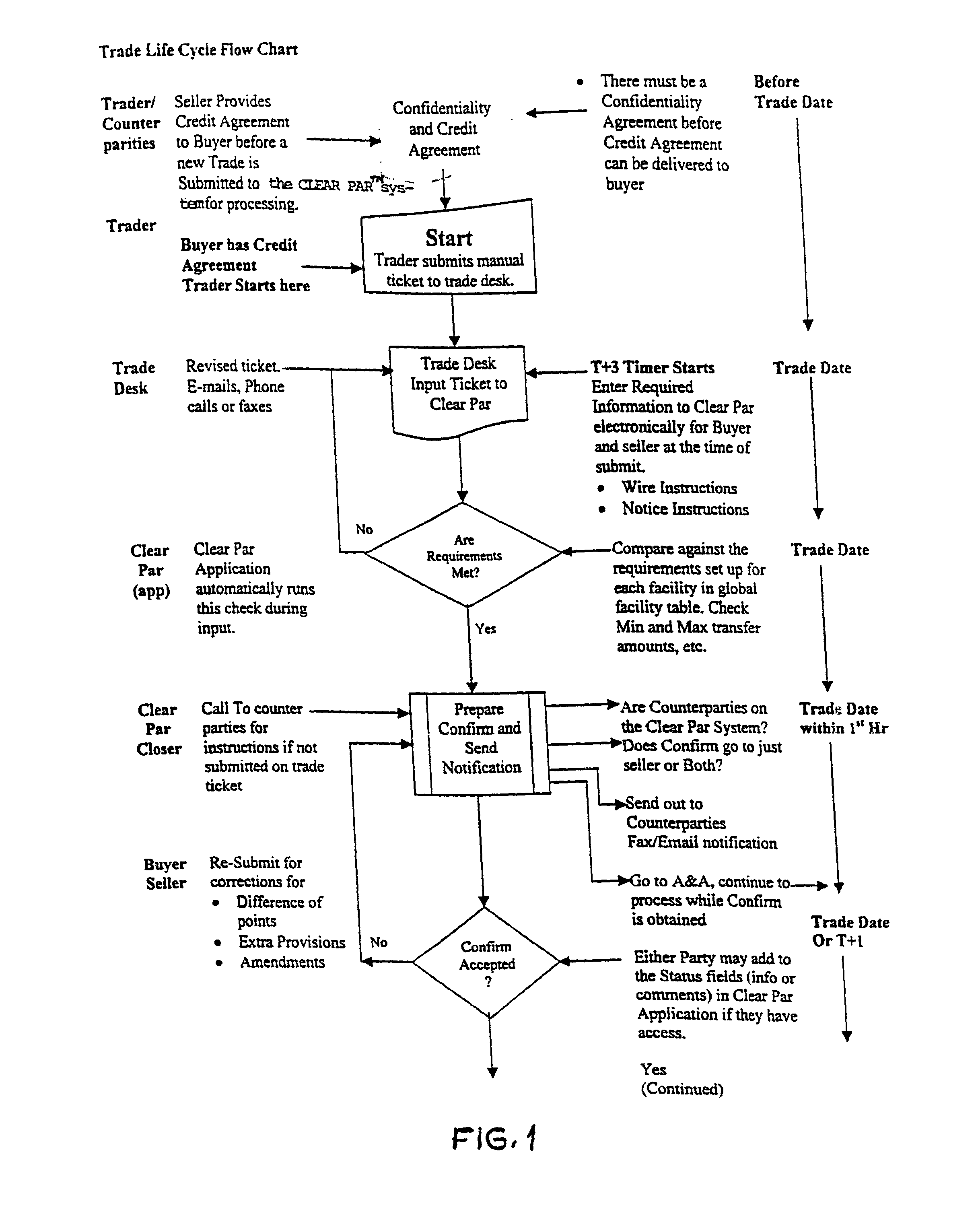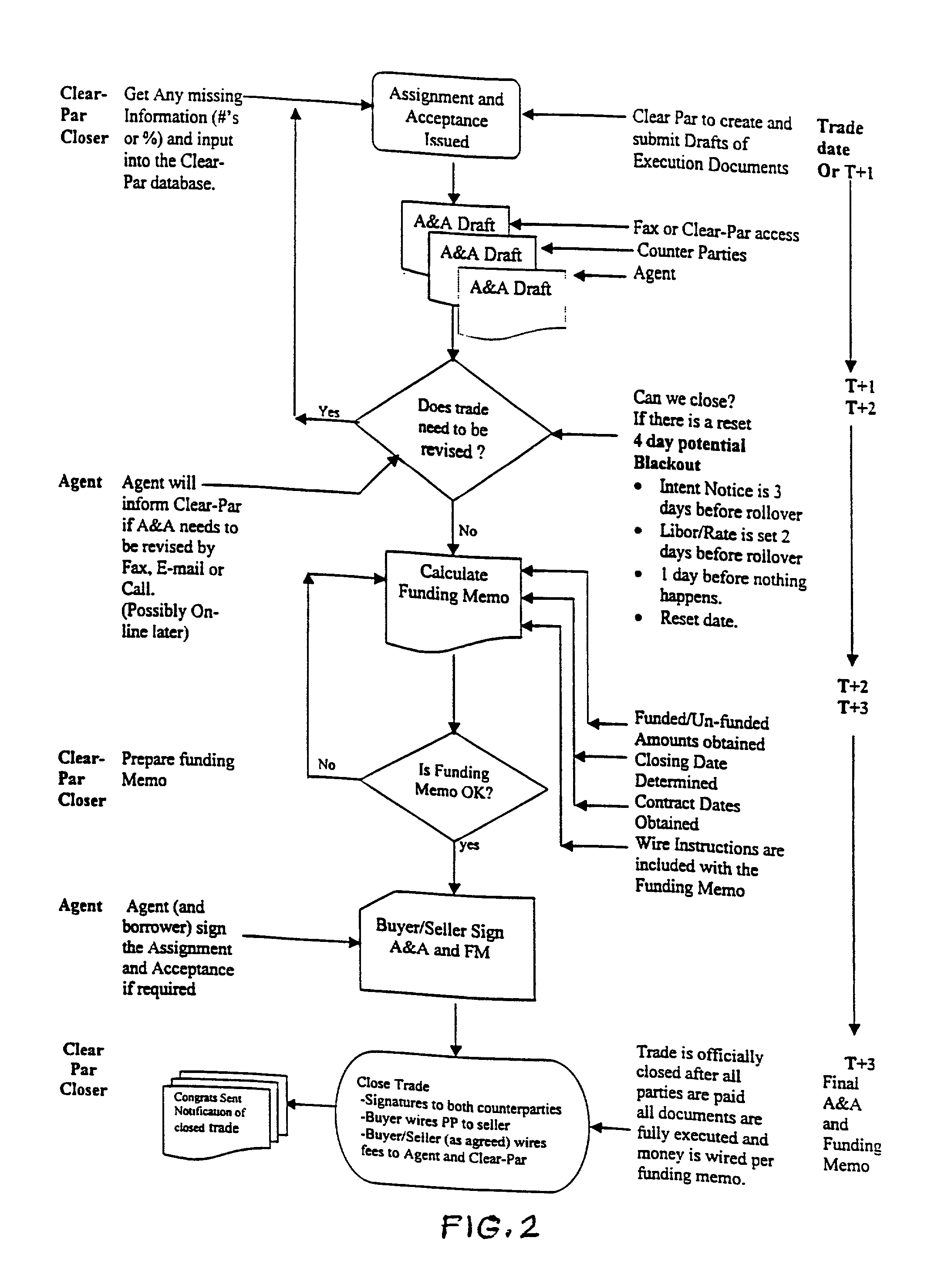[0006] Accordingly, a primary object of the present invention is to automate, and thereby reduce labor-intensity for
processing the closing / settlement of par loan trades.
[0008] A still further object of the present invention is to provide a method for par loan settlements / closings in order to enable the completion of such trades in approximately three business days (this being the equivalent of the mandated closing time for trades in the U.S. and international bond markets), in part by providing an ease of document production and delivery with direct access to documents involved in the trade at any time, which also avoids mistakes in the final
documentation for the trades. The present invention method also involves the storage of documents and
record-keeping in the
database of the system under the par number assigned to each closing to which it pertains, which allows the system participants to track the loan inventories and evidences of the transaction.
[0011] Thus, when the system is launched, the user's roles may be either as an administrator or a closer from the entity coordinating the system, the trader of the buyer or the seller, another employee of the buyer or the seller, or an agent. As stated previously, many users can access the system at one time, with no degradation in performance. When a new trade is submitted, the proposed closing date for a par trade (usually three days) is automatically calculated according to banking business days, with the calculation for the closing date extending out to ten days for accurate forecasting, if the trades do not close within the proposed and usual three day time period. Each trade is automatically assigned a unique tracking number for ease and quick reference to access trades and trade status, and for
inventory control and
record-keeping purposes. The valid users can access the login screen from any typical browser. By clicking on a
hyperlink from the
web site, instant customer specific trade status is displayed. The system automatically notifies a global administrator (from the central entity) when a new trade is posted, who then assigns the trade to specific closers for
processing. The system automatically routes the trade to the proper personnel to review documents and status, with pop-up functions for comments and remarks also being tracked and routed to the proper personnel. As the trade progresses through the settlement process, the related users for the transaction are automatically notified of such progress via encrypted e-mail. The e-mail message is sent immediately as the users complete each step. Also, the system itself automatically senses who is logged into the system, and inserts their user initials and time and date for any input to the system, as the trade is moved through to the settlement process. Required
field data is audited before a trade is moved to the next stage in the process. Depending upon the pre-defined role of the user, screens, command buttons and field editing is enabled or disabled, as required, to thus increase the integrity of the data entered.
[0013] Advantageously, with the system and method of the present invention, each user has the ability to create custom reports related to their complete trade history, status and positions based on a dynamic criteria entered during the
running time for the system. The system maintains on a sustained basis all global facility amounts and contracts under each facility in order to automate the settlement process for each trade submitted to the system. Pull-down lists are used to populate the required
field data to eliminate typos and redundant
data entry, thereby increasing accuracy to speed to settlement. The system dynamically updates all controls during the
running time as data is changed or added to the source tables. No program changes are required to maintain the
control selection lists. The system provides all users with the ability to produce related documents and information for review or print. The system includes coding behind each form to process the data selected from the pull-down lists, with such data used within the trade process to generate the closing figures based upon the
global information to settle a trade. The controls insert customer contact information for each credit, buyer and seller for each trade. Also, the system processes and displays tranche inventories for each member as trades are opened and closed for both buys and sells. Changes to inventory are made for permanent commitment reductions and / or permanent pay-downs, and revolving loan activity is tracked as well. Each
data entry is validated during input to insure
data integrity for all field types within each form of the system. Restricted data fields are enabled or disabled according to the user's pre-established role as a member of the system, in order to protect the integrity of the form data entered or modified. The system calculates all required formulae in order to provide the funding memo with the proper
payment amounts for each trade. This would include automatic calculation of "delayed compensation" when necessary. Furthermore, the system tracks each specific credit which a closer works on, and suggests lists of typical closers with a history on that credit. Additionally, the system displays a work
list for the selected closer and notifies the administrator when a closer is over-allocated. This efficiently distributes the
workload to expedite the settlement process where possible.
 Login to View More
Login to View More  Login to View More
Login to View More 


